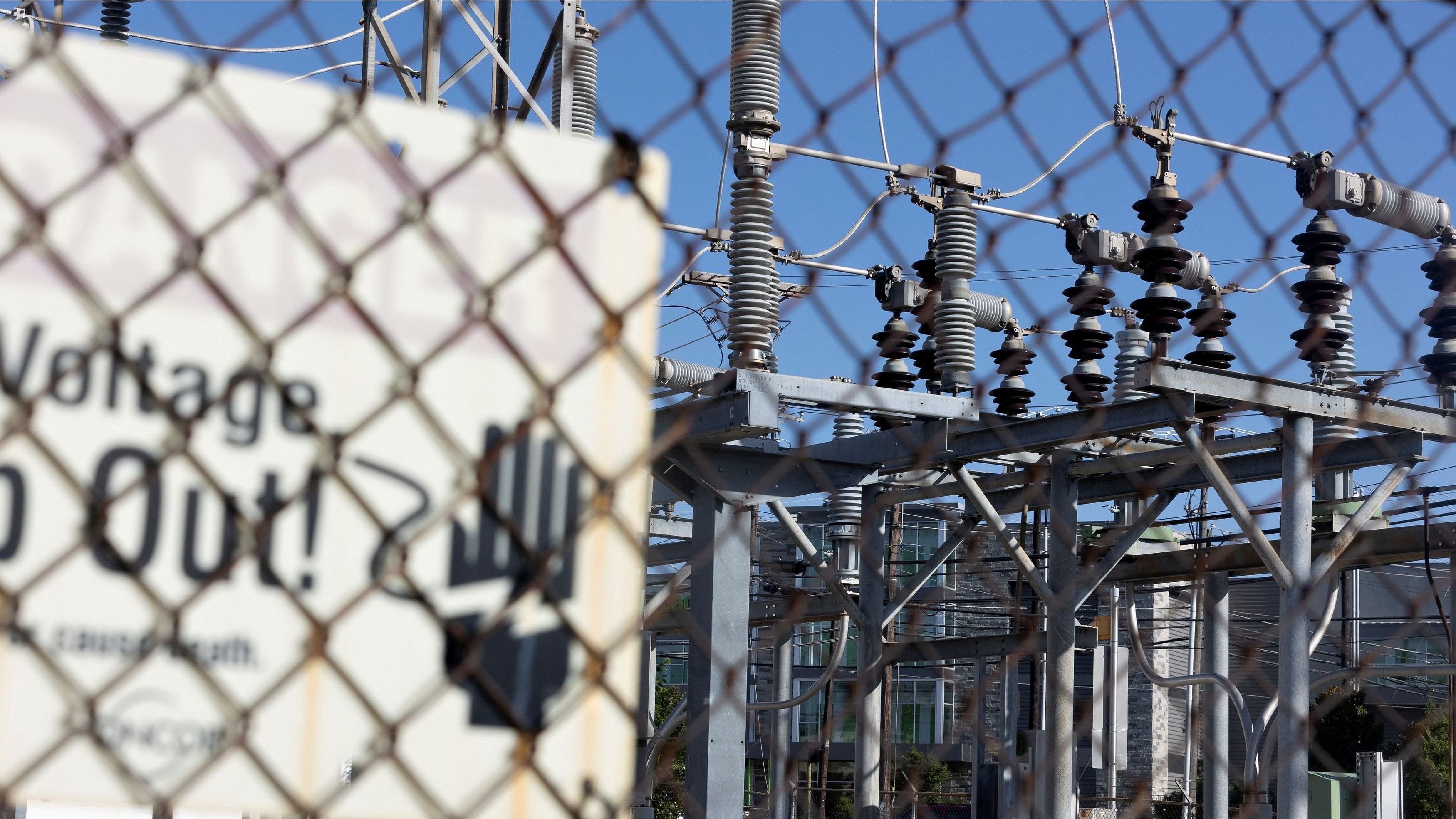
Power lines
Reuters
The Centre is planning to launch a new scheme to help power distribution utilities (discoms) cut technical losses through “transition-financing” of necessary capital expenditures. Discoms, mostly owned and controlled by state governments, are at the core of the power supply and distribution network in the country. They buy electricity from generating companies (gencos) and supply it to consumers. Technical losses, specifically aggregate technical and commercial (AT&C) losses, often mean power theft.
According to then Union Power Minister R K Singh, AT&C losses were previously as high as 27%. For example, if 100 units of electricity leave power dispatch centres and 27 units are stolen and not paid for, this severely impacts the discoms. Another significant factor that exacerbates their under-recoveries is the way tariffs are set.
The Electricity Act (2003) and the guidelines issued by the Ministry of Power require discoms to set tariffs so that the average revenue realisation (ARR) from their sale matches the average cost of purchase, transmission, and distribution, or average cost of supply (ACS). However, under state government directives, discoms often don’t bill certain households or supply electricity at rates below cost, as seen in Delhi, or even provide free supply to farmers, as in Punjab. Although states promise to compensate for these under-recoveries, most do not follow through. These under-recoveries and the lack of revenue from stolen electricity push the discoms into persistent losses. The excess revenue they generate from high tariffs on industries, businesses, and high-consuming households is inadequate to cover these losses.
The twin problems of AT&C losses and under-recoveries on sales to households and farmers have existed for nearly 25 years. Until 2015, no efforts were made to address them. In November 2015, the Centre launched the Ujwal DISCOM Assurance Yojana (UDAY), which condoned discoms’ accumulated debt of about Rs 400,000 crore. In return, discoms were required to reduce AT&C losses from 20.7% in 2015-16 to 15% by 2018-19 and close the ACS-ARR gap from Rs 0.59 per unit to zero by 2018-19. But they failed to meet these targets.
In 2019–20, AT&C losses were 18.9% against the 15% target, and the ACS-ARR gap was Rs 0.42 per unit against the target of ‘zero. By 2020–21, AT&C losses had risen to 22.3%, and the ACS-ARR gap was Rs 0.69 paise per unit. As a result, discoms’ losses, which had decreased from Rs 52,000 crore during 2015-16 to Rs 17,000 crore during 2017-18, surged to Rs 58,000 crore during 2020-21. Their debt scaled back to Rs 450,000 crore by the end of 2020–21.
This prompted the Centre to launch a ‘Reforms-Linked, Result-Based Scheme for Distribution’ (RLRBSD) in its 2021–22 budget, with an outlay of Rs 300,000 crore. The scheme aimed to trim AT&C losses to 12–15% and gradually narrow the ACS–ARR gap to ‘zero’ by March 2025. It focused on upgrading distribution infrastructure and capacity building, including compulsory pre-paid and smart metering across the power supply chain for about 220 million households.
Apart from gross budgetary support (GBS) of close to Rs 100,000 crore by the Centre, the scheme included funding from state-run sector-specific lenders, the Power Finance Corporation (PFC) and the Rural Electrification Corporation (REC), under irrevocable state government guarantees.
The RLRBSD, launched in FY 2021–22, talks about achieving the targets that should have been achieved by 2018–19, by March 2025. This, by itself, is laughable.
As per a reply to a Parliament question given by R K Singh in December 2023, “Till today, detailed project reports (DPRs) for 57 discoms from 32 states and UTs, having a total outlay of Rs 120,000 crore, have been approved for loss reduction works and Rs 130,000 crore for smart-metering works.” Beyond paper work, as of January 2024, the total loan disbursed by PFC-REC was Rs 112,000 crore for 16 states. As for the GBS, the release of funds by the Centre has been meagre; only Rs 6,000 crore was released during FY 2023–24.
As for deliverables, ‘against sanctioned smart metres of around 220 million, only about 0.8 million have been installed so far’. One wonders whether the money is being used by discoms to merely pay back the loans taken earlier to fund their losses. Now, the Centre is keen to launch its second version, RLRBSD II, with a similar outlay. Who knows? Even this will meet the same fate.
The problem is entirely political. In a bid to win elections, almost every party promises sops, which include, among others, power supply to farmers and poor households at throwaway prices or even free; they even ignore theft happening in slums and jhuggis that promise votes en masse. They use discoms as ‘guinea pigs’ for achieving these populist goals.
(The writer is a policy analyst)